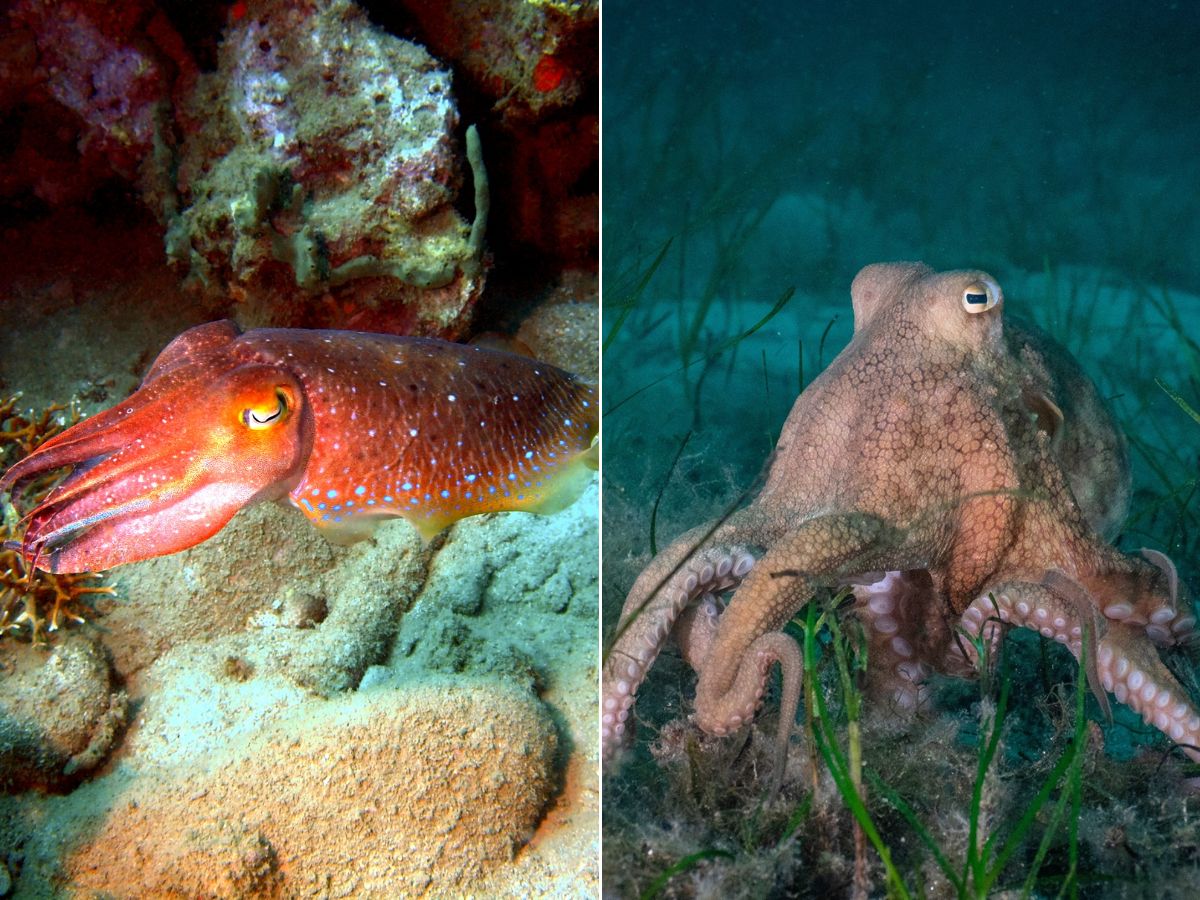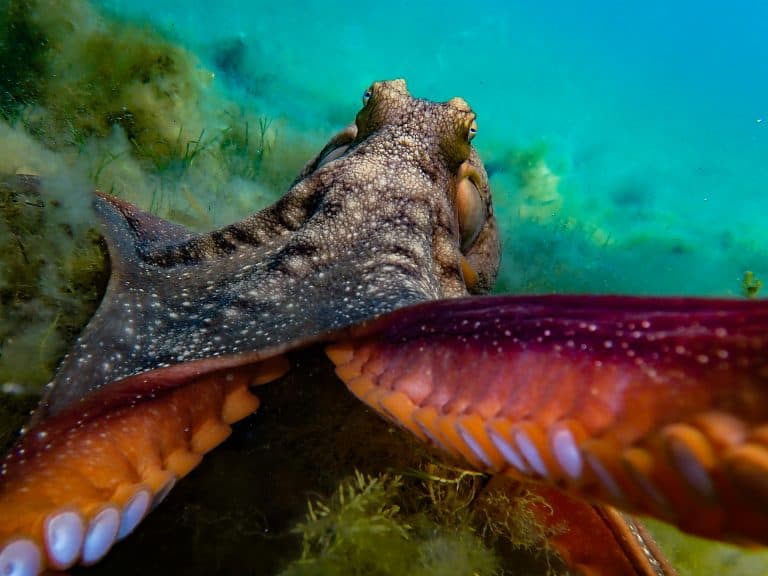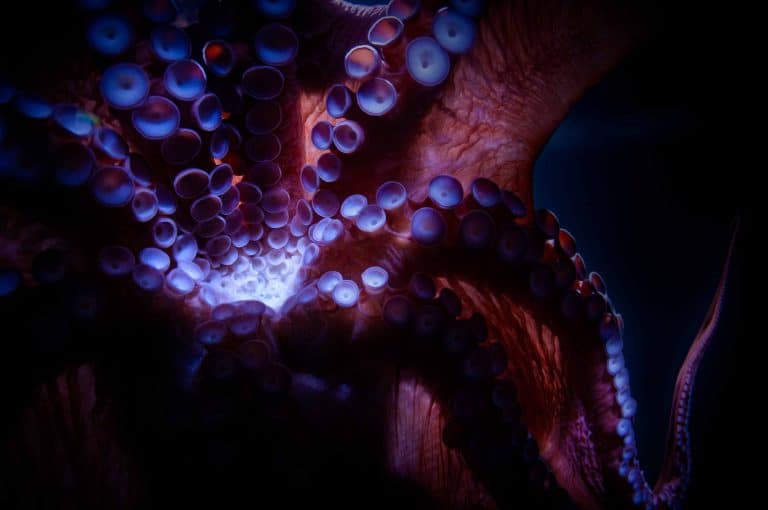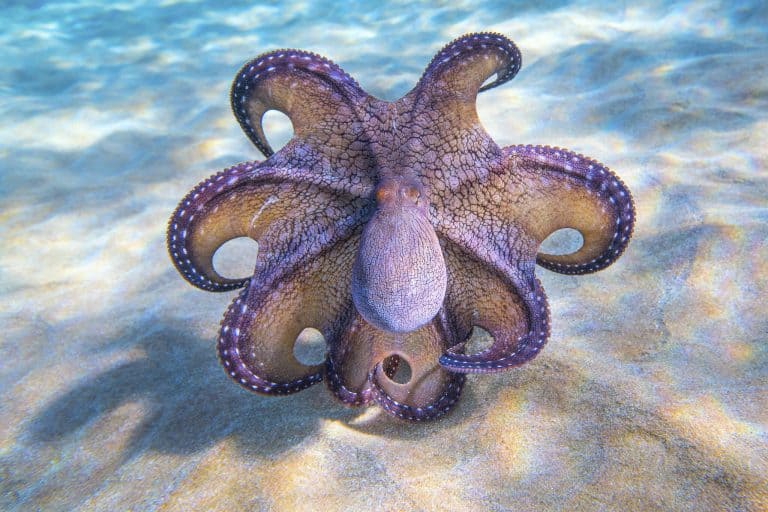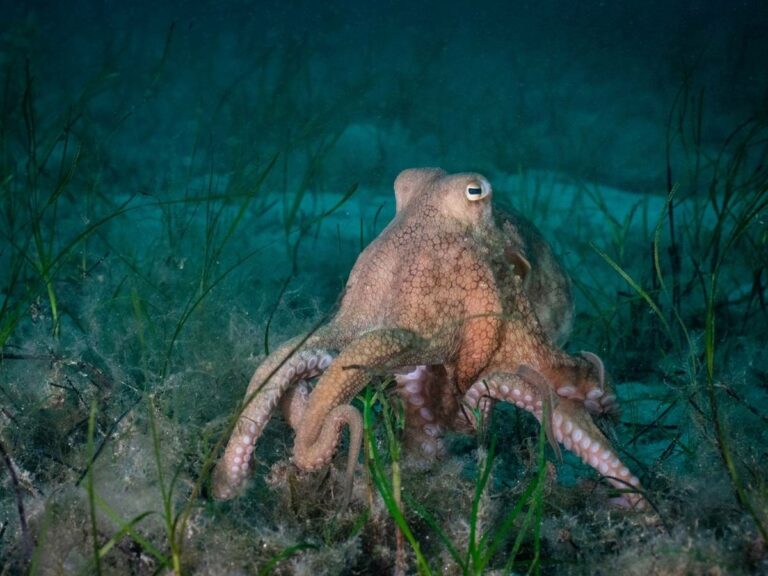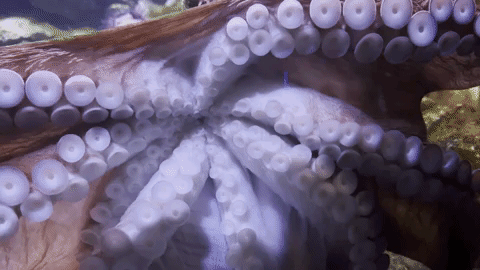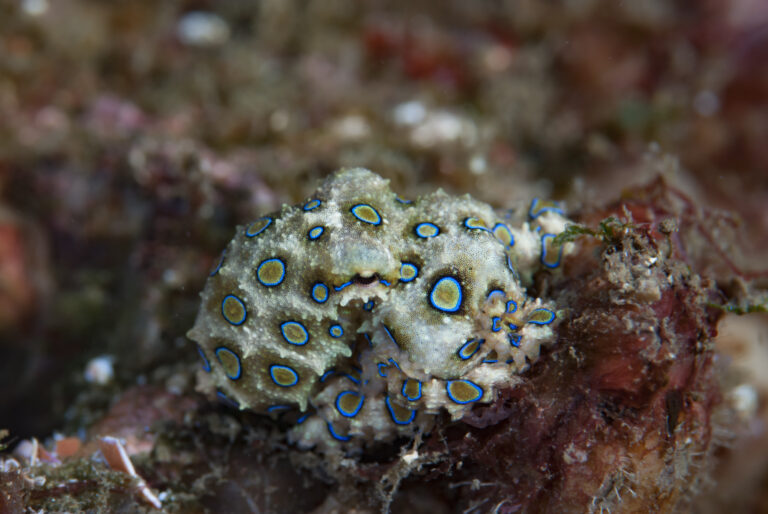What’s The Difference Between Cuttlefish vs. Octopus?
Cuttlefishes and octopuses are in the same family, and they have a lot in common! You can easily tell them apart, though, if you know what you’re looking for. Keep reading to learn all about cuttlefish vs. octopus, how they’re similar, and how they’re different – and everything in between!
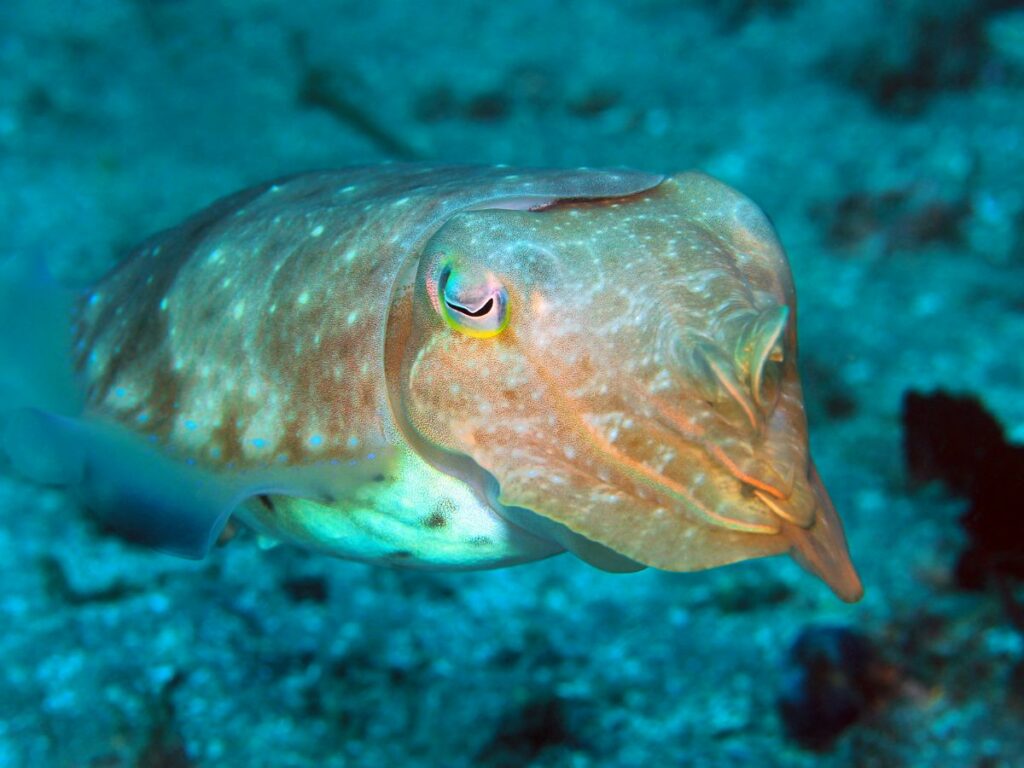
Common traits of cuttlefishes and octopuses
Cuttlefishes and octopuses are marine mollusks—a large group of animals that also includes:
- Clams
- Mussels
- Scallops
- Oysters
(And snails and slugs, too!)
Within the extremely diverse group of marine mollusks are cephalopods, a smaller group that includes both cuttlefishes and octopuses, along with squids and nautiluses.
Like all cephalopods, cuttlefishes, and octopuses have a bunch of limbs (10 and 8, respectively). They have soft bodies, lack an exoskeleton and a rigid endoskeleton, and have hard beaks for breaking the shells of their prey.
Both animals have three hearts, two that pump blood to their gills and one that pumps blood throughout the rest of the animals’ bodies. Both cuttlefishes and octopuses have blue blood!
These two animals use similar tactics to communicate and defend themselves. Like octopuses, cuttlefishes are masters of disguise, and they can not only drastically change the color and texture of their skin but also mimic other animals in clever, even tricky ways!
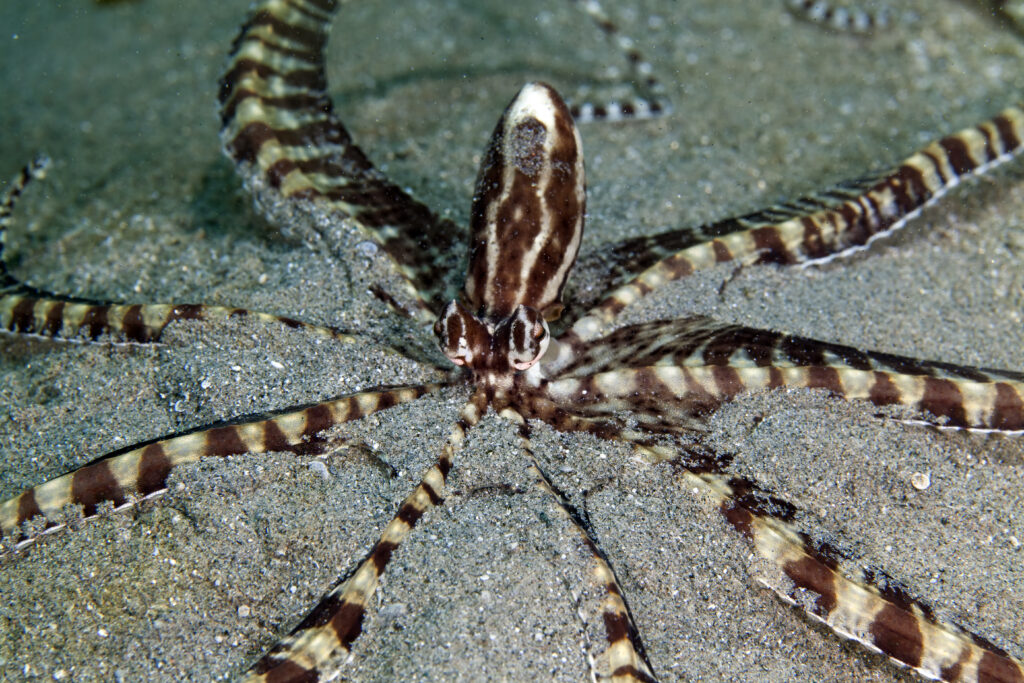
For instance, Mimic Octopuses pretend to be lionfish and sea snakes to deter predators. Pharaoh Cuttlefishes have been observed mimicking hermit crabs, presumably to help them get closer to prey without giving themselves away. Both animals also have ink sacs and can release ink as a way to startle and distract predators.
🐙 Octopus Fun Fact
In the realm of invertebrates, it doesn’t get any smarter than octopuses and cuttlefish. One study showed that cuttlefishes will hold off going for a reward (a food item) if they know they’ll get something even tastier if they wait. This is something even human toddlers struggle to accomplish!
Cuttlefish vs. Octopus: What’s the difference?
Compare a cuttlefish and an octopus side by side, and you’ll see their body plans are a little different.
A cuttlefish’s elongated body (also known as the mantle) looks more like a squid’s body than an octopus’s. A cuttlefish also has fins running along the sides of its body. These fins undulate (like the rippling of a flowy dress) to help the cuttlefish swim and maneuver.
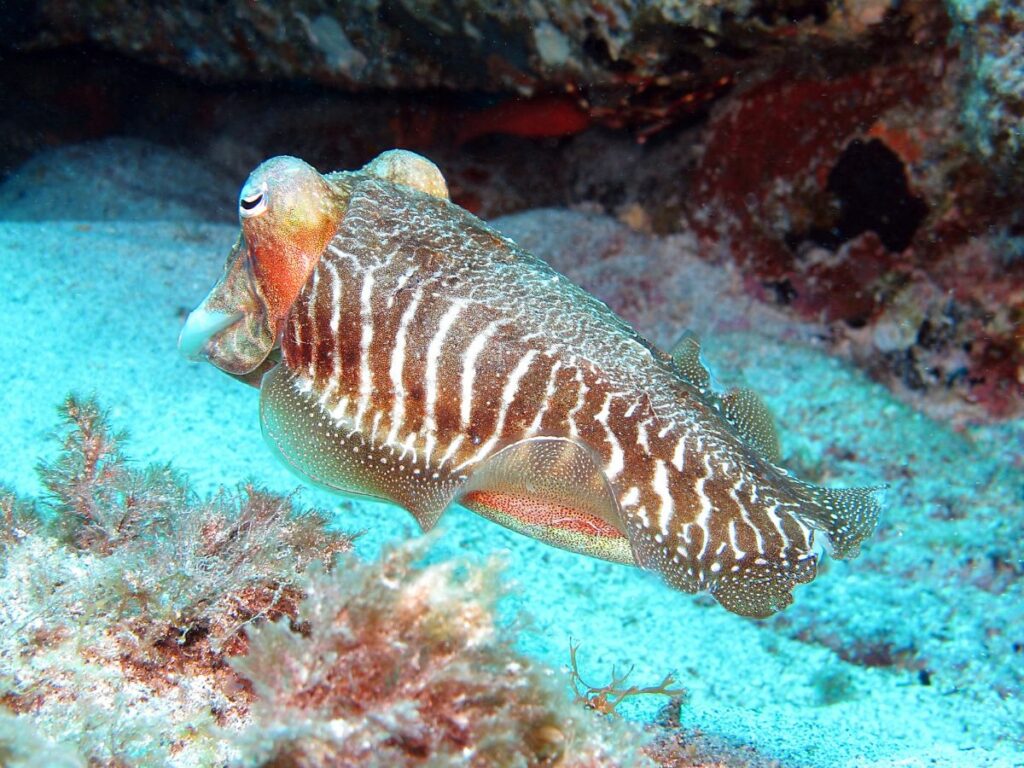
Like octopuses, cuttlefishes have eight arms fully lined with suckers, but they also have two long retractable tentacles they hide until there’s prey close enough to reach out and grab.
The tentacles only have suckers at the large end part of the tentacle (known as tentacular clubs)! Cuttlefishes use their arms less for moving and carrying and more for grasping prey they’ve lured close enough to snatch with their tentacles.
A cuttlefish’s W-shaped pupils are different from an octopus’s pupils, which typically appear rectangular. And one last thing that sets a cuttlefish apart that you CAN’T see is its cuttlebone—an internal shell that helps the cuttlefish regulate its buoyancy.
🐙 Octopus Fun Fact
While historically thought to be as antisocial as their octopus cousins, cuttlefishes have surprised us all! There’s evidence that some cuttlefishes migrate together in groups.
If you enjoyed this post, check out this one: Giant Australian Cuttlefish Facts That Will Make You Go WHOA!
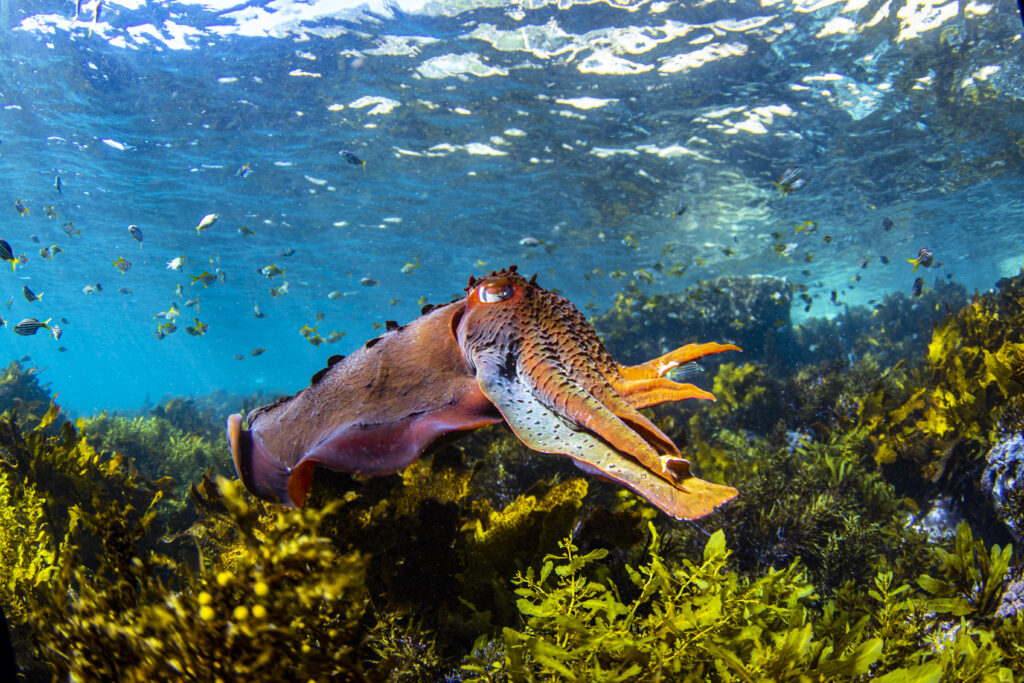
If you want to educate yourself some more about all sorts of different cephalopods, take a look at our encyclopedia. Or, what we call it, our Octopedia!
Connect with other octopus lovers via the OctoNation Facebook group, OctopusFanClub.com! Make sure to follow us on Facebook and Instagram to keep up to date with the conservation, education, and ongoing research of cephalopods.
More FAQs to read:
- How Do Octopuses Breathe?
- Do Octopus Have Beaks?
- Which Direction Is The Front Of The Octopus?
- Can An Octopus Regrow An Arm?
- Is There Such Things As A Freshwater Octopus?

Bethanie Hestermann is a freelance writer and author of animal-science books, including Zoology for Kids and Marine Science for Kids. She is a contributing writer for OctoNation! You can find all her books at www.zoologyforkids.com/books.
